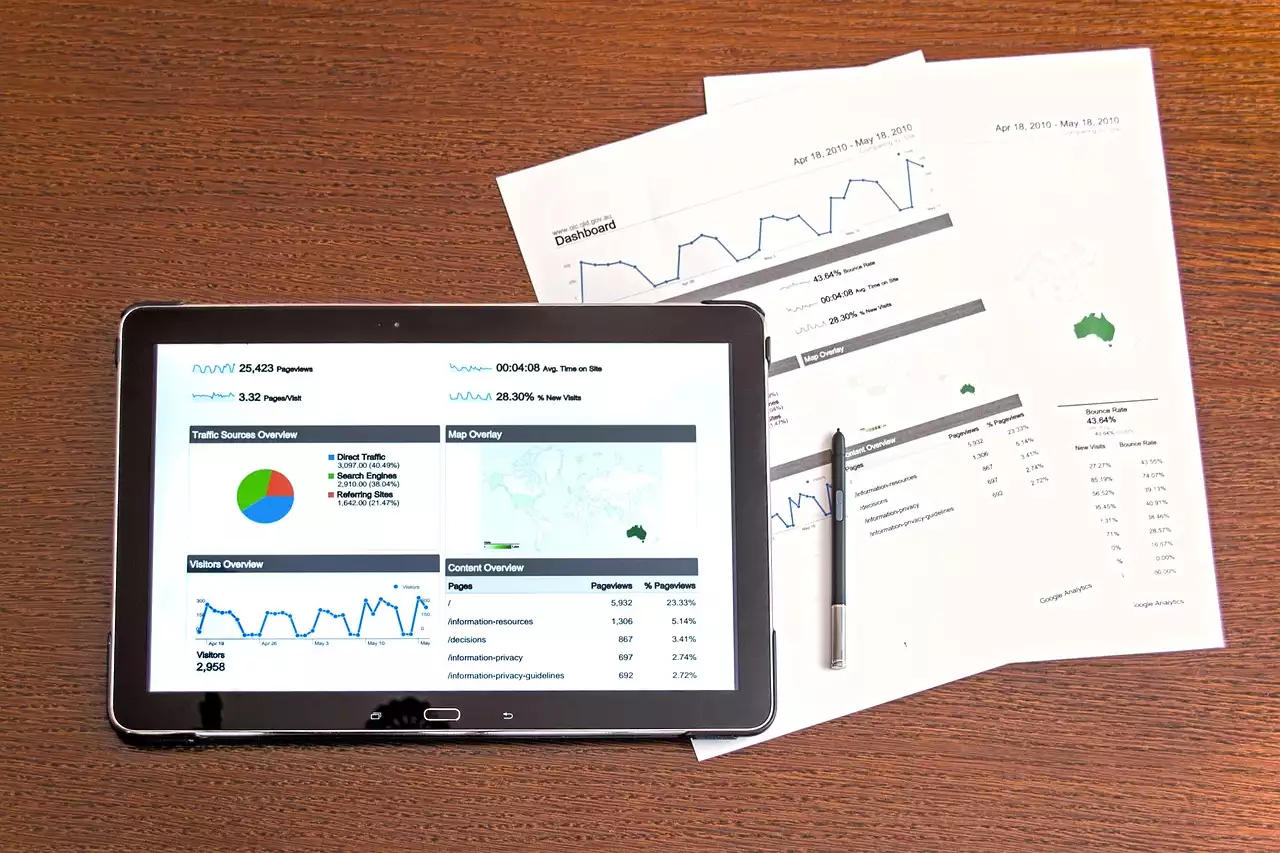What is click-through rate (CTR)?
Click-Through Rate (CTR) is a metric used in digital marketing that measures the ratio of clicks to impressions. Impressions refer to the number of times your ad is displayed on a search engine results page (SERP), while clicks refer to the number of times someone clicks on your ad. CTR is expressed as a percentage and is calculated by dividing the number of clicks by the number of impressions.
For example, if your ad is displayed 100 times and receives 10 clicks, your CTR is 10%. A higher CTR indicates that your ad is resonating with your target audience and generating more clicks. CTR is a critical metric for SEM as it directly impacts your ad's performance and helps determine your Quality Score, which we'll discuss later in this article.
Why is CTR important in search engine marketing (SEM)?
CTR is a crucial metric in SEM as it directly affects your ad's performance and determines your Quality Score. A higher CTR indicates that your ad is resonating with your target audience and generating more clicks. This, in turn, drives more traffic to your website and can increase your chances of converting visitors into customers.
On the other hand, a low CTR can negatively impact your ad's performance and lead to a lower Quality Score. A low Quality Score can result in a higher cost per click (CPC), a lower ad position, and a lower ad rank. This can reduce your ad's visibility, decrease your chances of generating clicks and conversions, and ultimately impact your ROI.
How is CTR calculated?
Calculating CTR is simple and straightforward. It is calculated by dividing the number of clicks by the number of impressions and multiplying the result by 100. The formula for CTR is as follows:
CTR = (Clicks / Impressions) x 100
For example, if your ad is displayed 1000 times and receives 50 clicks, your CTR is calculated as follows:
CTR = (50 / 1000) x 100 = 5%
Factors that affect CTR
Several factors can affect your CTR, including ad position, ad copy, ad relevance, targeting, and competition. Let's take a closer look at each of these factors:
Ad position: Your ad's position on the SERP can significantly impact your CTR. Ads that appear at the top of the page tend to receive more clicks than ads that appear at the bottom of the page. This is because users tend to focus on the top of the page when searching for information.
Ad copy: Your ad copy plays a crucial role in generating clicks and improving your CTR. Your ad copy should be relevant, engaging, and compelling, and should clearly communicate the benefits of your product or service. It should also include a strong call-to-action (CTA) that encourages users to click on your ad.
Ad relevance: Your ad's relevance to the user's search query is another critical factor that can impact your CTR. Your ad should be highly relevant to the user's search query and should match the intent behind the query. This can help improve your ad's click-through rate and generate more clicks and conversions.
Targeting: Targeting the right audience is essential for generating clicks and improving your CTR. You should target users who are most likely to be interested in your product or service and who are most likely to convert. This can help improve your ad's relevance and generate more clicks and conversions.
Competition: Competition for ad space can also impact your CTR. If you're bidding on highly competitive keywords, you may need to increase your bids to improve your ad's position and generate more clicks. However, this can also increase your cost per click (CPC), so it's important to find the right balance between ad position and cost.
Benchmark CTRs by industry and platform
CTR benchmarks can vary by industry and platform, so it's essential to understand what a good CTR looks like for your specific industry and platform. Here are some general CTR benchmarks by industry and platform:
Google Search Ads:
- Average CTR for all industries: 3.17% - Average CTR for the top 25% of advertisers: 6.05% - Average CTR for the bottom 25% of advertisers: 0.46%
Google Display Ads:
- Average CTR for all industries: 0.46% - Average CTR for the top 25% of advertisers: 0.92% - Average CTR for the bottom 25% of advertisers: 0.03%
Facebook Ads:
- Average CTR for all industries: 0.90% - Average CTR for the top 25% of advertisers: 1.81% - Average CTR for the bottom 25% of advertisers: 0.11%
Keep in mind that these are general benchmarks, and your specific CTR will depend on several factors, including your ad copy, targeting, and competition.
Strategies to improve CTR
Improving your CTR requires a combination of optimization tactics, including ad copywriting, targeting, and bidding. Here are some strategies to improve your CTR:
1. Optimize your ad copy: Your ad copy plays a crucial role in generating clicks and improving your CTR. Your ad copy should be relevant, engaging, and compelling, and should clearly communicate the benefits of your product or service. It should also include a strong call-to-action (CTA) that encourages users to click on your ad.
2. Optimize your targeting: Targeting the right audience is essential for generating clicks and improving your CTR. You should target users who are most likely to be interested in your product or service and who are most likely to convert. This can help improve your ad's relevance and generate more clicks and conversions.
3. Use ad extensions: Ad extensions can help improve your ad's visibility and increase your chances of generating clicks. Ad extensions allow you to include additional information about your business, such as your location, phone number, and reviews. This can make your ad more compelling and encourage users to click on your ad.
4. Test different ad formats: Testing different ad formats can help you identify what works best for your audience and improve your CTR. For example, testing different ad formats such as text ads, image ads, and video ads can help you identify what resonates best with your audience.
5. Use negative keywords: Negative keywords can help you filter out irrelevant search queries and improve your ad's relevance. By excluding irrelevant search queries, you can improve your ad's click-through rate and generate more clicks and conversions.
The impact of ad position and ad copy on CTR
Ad position and ad copy play a critical role in generating clicks and improving your CTR. Ads that appear at the top of the page tend to receive more clicks than ads that appear at the bottom of the page. This is because users tend to focus on the top of the page when searching for information.
Your ad copy should be relevant, engaging, and compelling, and should clearly communicate the benefits of your product or service. It should also include a strong call-to-action (CTA) that encourages users to click on your ad.
Here are some tips for improving your ad position and ad copy:
1. Bid on relevant keywords: Bidding on relevant keywords can help improve your ad's position and generate more clicks. You should bid on keywords that are relevant to your product or service and that match the user's intent behind the search query.
2. Use ad extensions: Ad extensions can help improve your ad's visibility and increase your chances of generating clicks. Ad extensions allow you to include additional information about your business, such as your location, phone number, and reviews. This can make your ad more compelling and encourage users to click on your ad.
3. Use ad copy that stands out: Your ad copy should be relevant, engaging, and compelling. It should clearly communicate the benefits of your product or service and include a strong call-to-action (CTA) that encourages users to click on your ad.
Tools for monitoring and analyzing CTR
Several tools can help you monitor and analyze your CTR, including Google Ads, Google Analytics, and third-party tools like SEMrush and Ahrefs. These tools can provide valuable insights into your campaign performance, including your CTR, impressions, clicks, and conversions.
Google Ads provides a wealth of data on your campaign performance, including your CTR, impressions, clicks, and conversions. You can use this data to identify areas for improvement and optimize your campaigns for better performance.
Google Analytics can also provide valuable insights into your campaign performance, including your CTR, bounce rate, and conversion rate. You can use this data to identify areas for improvement and optimize your campaigns for better performance.
Third-party tools like SEMrush and Ahrefs can also provide valuable insights into your campaign performance, including your CTR, impressions, clicks, and conversions. These tools can help you identify areas for improvement and optimize your campaigns for better performance.
The relationship between CTR and quality score
CTR plays a crucial role in determining your Quality Score, which is an important metric in Google Ads. Quality Score is a measure of the quality and relevance of your ads, keywords, and landing pages. It is calculated based on several factors, including your CTR, ad relevance, landing page experience, and more.
A higher Quality Score can lead to a lower cost per click (CPC), a higher ad position, and a higher ad rank. This can improve your ad's visibility, increase your chances of generating clicks and conversions, and ultimately impact your ROI.
Improving your CTR can help improve your Quality Score, which can lead to better ad performance and a higher ROI.










